
The Ultimate Marathon Race Pack Guide and Running Awards
Table of Contents Becoming a marathon runner is not a hobby; it is a lifestyle. It begins with early morning
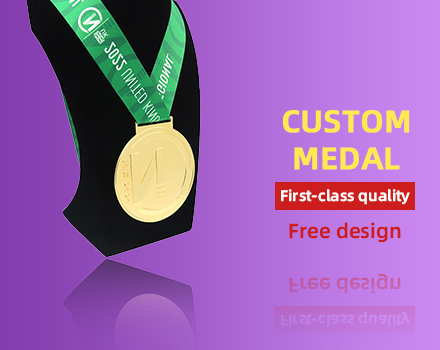
According to the survey, about one-third of the guests do not know how to bespoke medals.
In this in-depth case study, we will take you behind the scenes in the manufacturing process of custom medal awards.
From selecting the right material to creating unique designs, we will explore the strategies and tactics that top event organizers use to create custom medals that leave a lasting impression on participants.
By the end of this article, you will have a complete understanding of how to custom medals that stand out and reflect the spirit of your event.
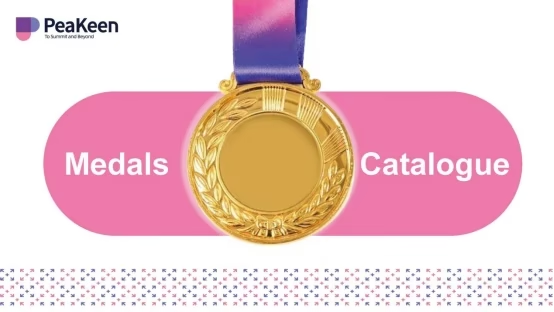
Generally, the following steps are required to customize medals:
1. Decide which medal crafts to use
2. Choose your medal size
3. Select medal accessories
4. Decide the packaging
5. Find a trustworthy supplier
6. Determine the budget range
7. The Production Cycle Of Medals
If you are the head of a tournament organizer, you may not know what processes are applicable to your medals and what facilities your suppliers can offer you, don’t worry, after reading this article you will know how to bespoke medals and communicate with your suppliers.

William is the organizer of a rainbow run program(a running race for fun, people can splash rainbow multi colour paint on others. ) with over 1000 participants. He has been working with us on custom medals for over 3 years. Sometimes he bespoke cast medals, sometimes custom insert medals.
We initially reached out to him, and it just so happened that he was also looking for a better supplier, so he sent us his logo and the design (if you don’t have one, don’t worry, most suppliers will provide a free design service). Tips: A shiny gold medal is more likely to attract more registrants.
At that time he did not tell us which processes he would like to use. (If you don’t have an idea, just send your logo to us, and we will offer free design service.)
So we gave him a list of the most suitable processes based on our experience.
He felt that these processes might be worth trying, and we went on to the next step of the discussion.
Of course, if you have already decided which processes to use, you can also tell the supplier directly.
This article will list the massive range of the processes commonly used on medallions and explain how they work for your reference. If you want bespoke medals to be more special, you can use multiple processes at the same time!
| Soft Enamel | Fill the paint colour into the products. The surface is linear. |
| Hard Enamel | Prepare a certain proportion of paint and other glues, fill them into the product, and polish the surface in the later stage to achieve the enamel effect. The surface is smooth. |
| UV Print | Print a pattern on the surface(Suitable for more complex pattern colours or colour gradients) |
| Epoxy | A layer of transparent glue is added to the surface of the product to protect the product |
| Glow | By absorbing light, the night can glow |
Transparent Colours | The colour is transparent and the bottom can be seen |
| Cut Out | Cut out the product and move it to achieve a hollow effect |
| Two-tone | The same product is electroplated in two colours |
| 3D/2D | Arc-shaped or multi-layer / product only has two layers of concave and convex |
| Plating | The process of attaching a layer of the metal film to the surface of metal or other material parts by electrolysis. It can prevent corrosion, improve wear resistance, conductivity, and reflective properties, and enhance appearance. And make medals shiny gold in the sun, you can choose shiny gold silver or antique gold silver. |
| Stained Glass | Cut out part of the pin and fill in the transparent colour |
| Gem | Set your pin with artificial diamonds (diamonds are available in a variety of colours) |
| Hinge | The two-layer pin can be designed to open and close or rotate like a door |
Insert | Custom insert medals, insert your branding or design on blank medals with your logo |
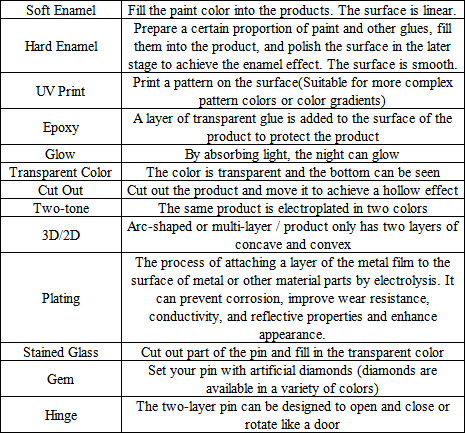
Now, let’s talk about size, shall we? Size matters, but not in the way you think!
A bigger medal doesn’t necessarily mean it’s better unless you’re compensating for something, of course. The medal size should be determined based on the design and the purpose of the medal.
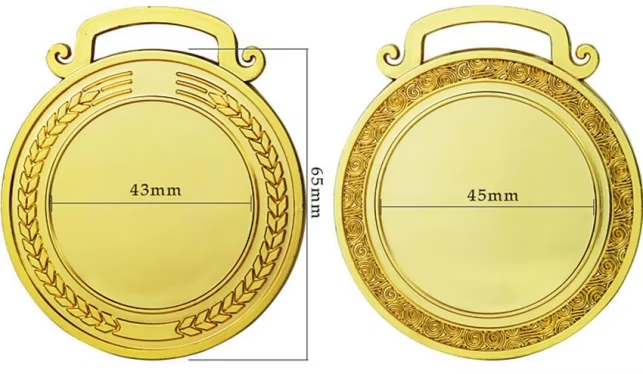
Based on William’s design, we suggested the size of the medal is 3″. William wanted a larger size, but to custom perfect medal, he might have to reduce the process a bit, which might not work well, so William took our advice.
For instance, if you want custom personalised medals, you might want to go for a larger size to make it more eye-catching. On the other hand, if you’re making a medal for a charity event, a smaller size might be more appropriate to keep the costs down.
But don’t worry, we won’t leave you hanging on this one. We’ll help you choose the right size for your medal based on your design, budget, and logo. And if you’re not sure, we’ll guide you through the whole process. So, let’s work together to make your medal stand out, no matter the size!
You can check out this product where we have provided some styles for your reference.
To be in line with the Rainbow Run theme, we are in complete agreement with William’s goal of selecting bespoke printed ribbons due to their ability to incorporate gradient colours.
There are fewer options for medal accessories than for badges, which fits the medal application scenario.
In our 10+ years of medal making, the vast majority of medal ribbons are made with either Fabric Ribbon or Satin Ribbon, Satin Ribbon can be printed with gradient colours and your event logo, while Fabric Ribbon is a bit plainer.
Customers also chose other accessories such as medal ribbons in the past, such as Ball Chains, ropes, and chains, you can request other accessories, and we will communicate with the appropriate manufacturer.
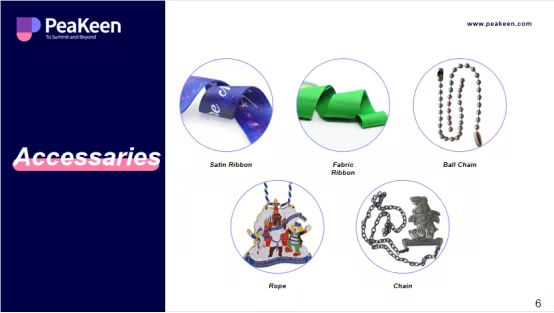
Coming to the step of packaging, there is an old saying in China that people depend on clothes and horses depend on saddles, which means that people will look extraordinarily spiritual when they wear a decent dress; horses will look especially steep and beautiful when they are equipped with a pair of elaborate saddle blankets.
Our personalised medals are also the same. Packaging is all about presentation.
What image do you want to convey to your awards winner, do you want it to be sophisticated, interesting, or valuable, consider the material of your packaging as well as the design, and even any other branding information you want to include.
But don’t forget that the most important thing the packaging needs to be is durable enough to allow for the protection of your personalised medals during shipping and storage.
At the same time, beautiful packaging can make you win in the future, it can impress the awards winner and even create a collecting hobby.
So let’s get creative and make your packaging stand out from everyone else!
We now have at least 6 packaging options for you to choose from. If you want other packaging methods, please send us the pictures, and we will solve it for you once and for all, you don’t need to spend time finding another supplier.
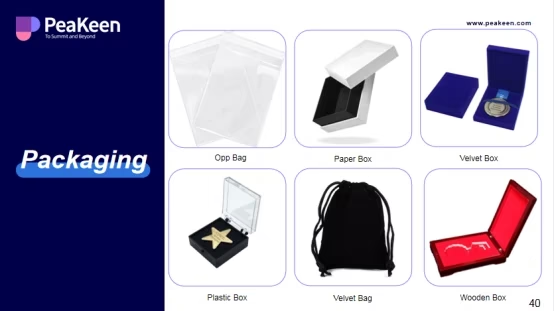
William believes that in order to stand out from other events and highlight his own, leaving a lasting impression on people, he has chosen the velvet box.
It must be admitted that customised medals with exquisite box packaging can be displayed beautifully, and William’s choice is excellent.
So, you’ve decided on your design sketches, medal sizes, accessories, and even the packaging. Now, it’s time to find a match supplier to make your dream come true. But how do you know who to trust? Look for a supplier with a track record of delivering quality products on time and being responsive to your needs and concerns. You can also ask for references or look for reviews from other customers.
Remember, cheap isn’t always the best, with production time, shipping time, etc. involved in the middle – when it comes to something as important as your custom medallion, quality and reliability are key. Don’t miss your event time!
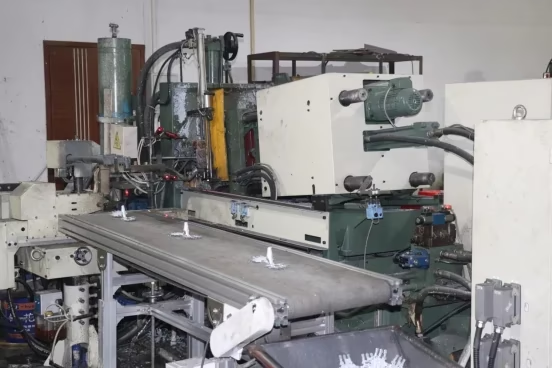
Determining your budget is like playing a game of Tetris – making sure everything fits together perfectly is the key to your success or failure! But fear not, my dear reader, for there are many options to fit every budget range and sometimes other processes can be used appropriately to achieve the same results.
Generally speaking, shiny gold silver and antique gold silver medal designs will be cheaper.
But don’t fear, my dear reader, for there are many options to suit every budget. From simple and affordable to extravagant and luxurious, there is a medal design option for everyone. Just be sure to keep in mind the various factors that may affect the price, such as the size of the medallion, the type of metal used, the craftsmanship used, and additional accessories or packaging. As long as you stay in communication with the vendor, you can customize the perfect medallion without breaking the bank.
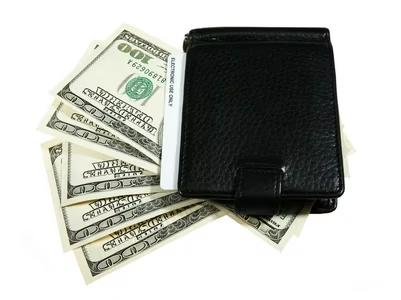
Oh, my dear readers, it’s time to talk about production lead times range! Don’t worry, we won’t bore you with all the nitty-gritty details, but it is important to note that the production time for a bespoke medal will vary depending on a number of factors, such as the complexity of the design, the quantity required and the production method chosen.
Generally speaking, your bespoke medal may take anywhere from a few days to a few weeks to produce. We will work closely with our trusted shipping partners to ensure your medals are produced to the highest quality and delivered on time.
Here are some figures you can refer to:
Reference Time | |
100 – 500 | 7 days |
500 – 1000 | 12 days |
1000 – 5000 | 15 – 20days |
10000 + | 20 days |
DDP by sea | 30 – 35 days |
DDP by air | 15 – 18 days |
Express | 3 – 7days |
By road | 25 – 30 days |
By railway | 25 – 30 days |

Table of Contents Becoming a marathon runner is not a hobby; it is a lifestyle. It begins with early morning
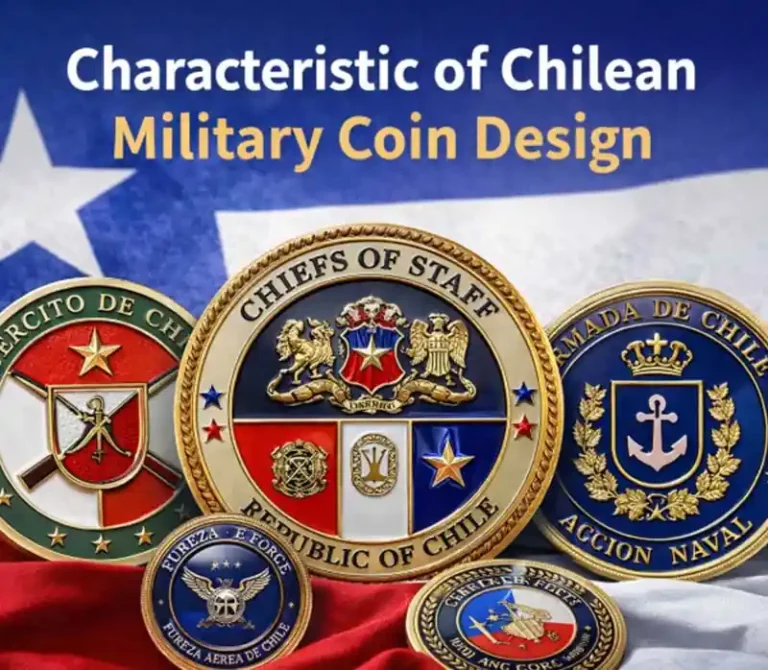
Table of Contents Chile’s armed forces, the Ejército de Chile (Army), Armada de Chile (Navy), and Fuerza Aérea de Chile
No. 5, Tongan Road,
East District Xiaolan Town,
Zhongshan, Guangdong,
China
Copyright © 2024, Zhongshan Peakeen Gifts Supply Chain Co., Ltd. All rights reserved. Powered by PeaKeen Privacy Policy
Let’s work together to achieve business growth!